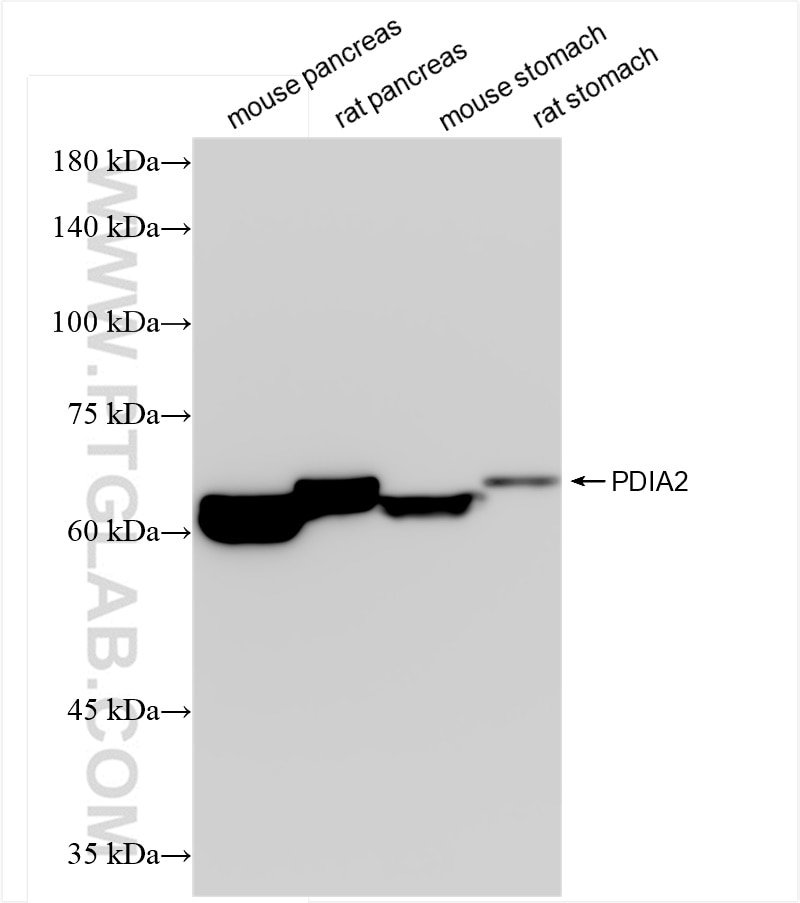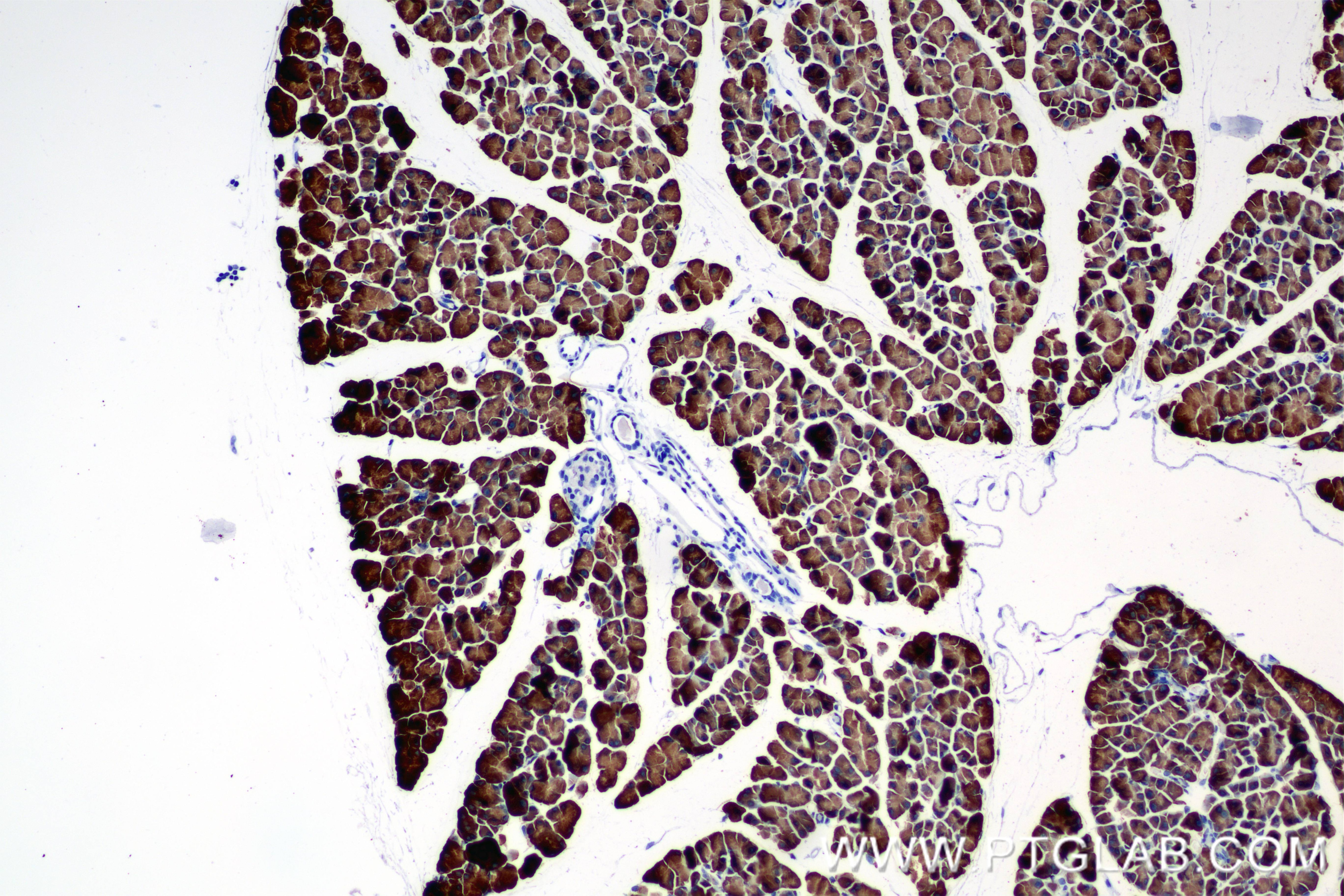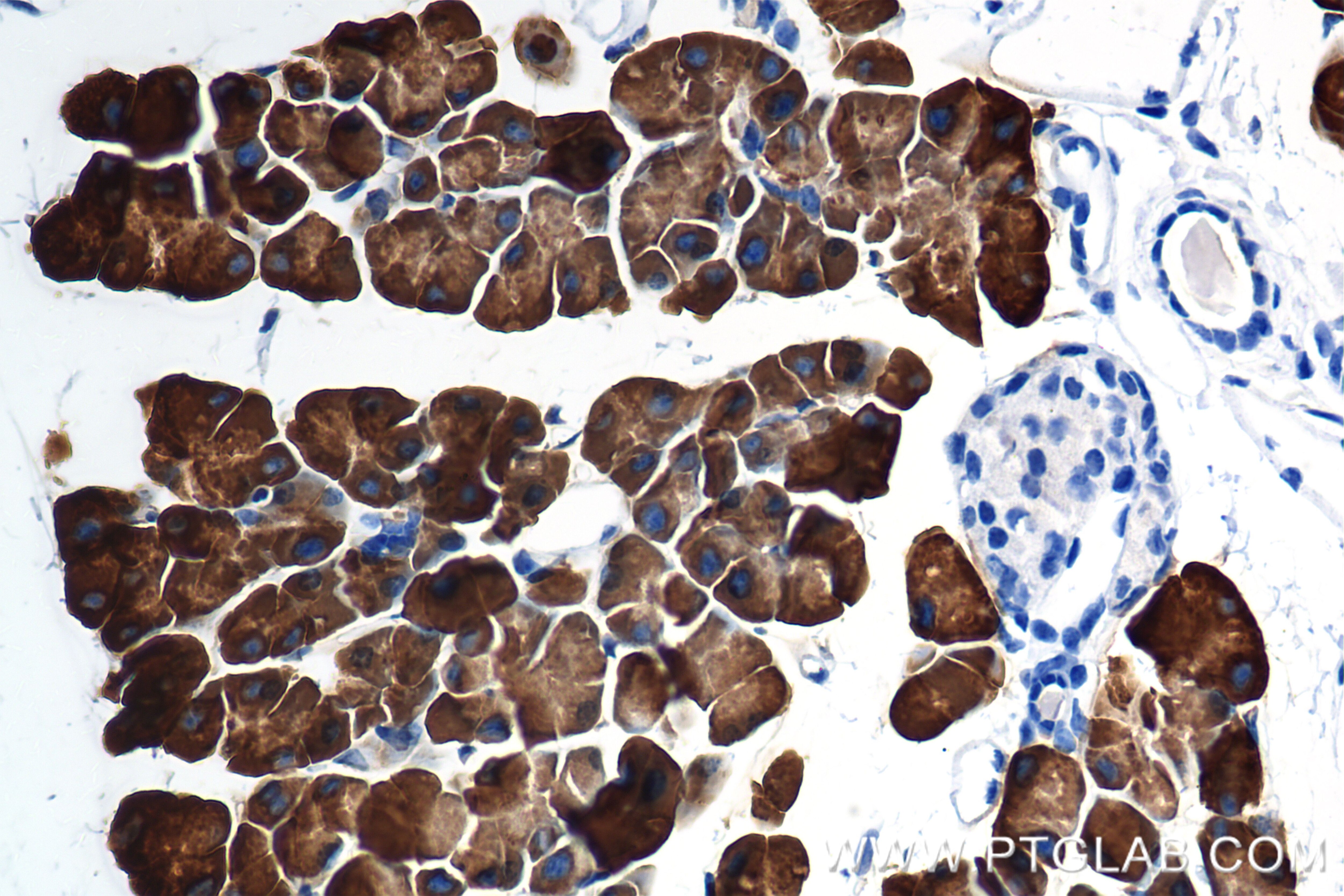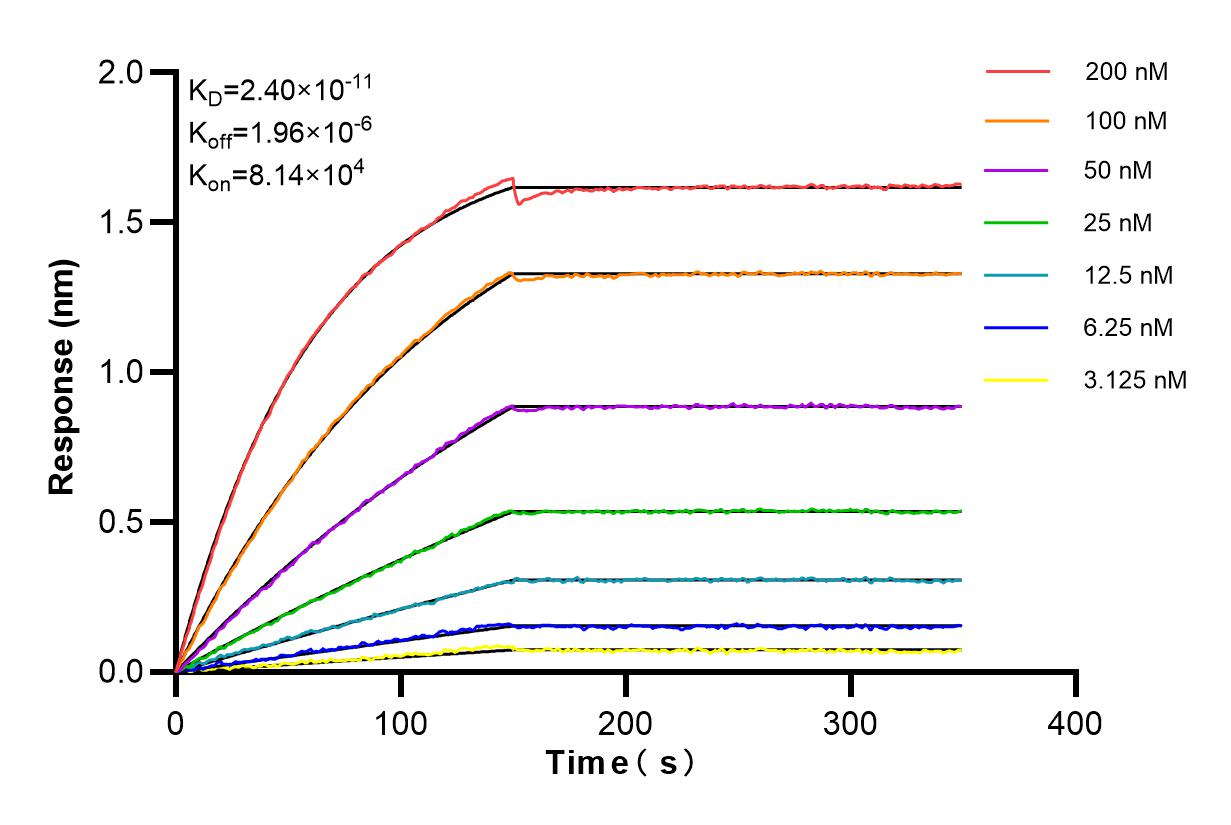Tested Applications
| Positive WB detected in | mouse pancreas tissue, rat pancreas tissue, mouse stomach tissue, rat stomach tissue |
| Positive IHC detected in | mouse pancreas tissue Note: suggested antigen retrieval with TE buffer pH 9.0; (*) Alternatively, antigen retrieval may be performed with citrate buffer pH 6.0 |
Recommended dilution
| Application | Dilution |
|---|---|
| Western Blot (WB) | WB : 1:5000-1:50000 |
| Immunohistochemistry (IHC) | IHC : 1:500-1:2000 |
| It is recommended that this reagent should be titrated in each testing system to obtain optimal results. | |
| Sample-dependent, Check data in validation data gallery. | |
Product Information
84765-4-RR targets PDIA2 in WB, IHC, ELISA applications and shows reactivity with human, mouse, rat samples.
| Tested Reactivity | human, mouse, rat |
| Host / Isotype | Rabbit / IgG |
| Class | Recombinant |
| Type | Antibody |
| Immunogen |
CatNo: Ag35301 Product name: Recombinant human PDIA2 protein Source: e coli.-derived, PGEX-4T Tag: GST Domain: 231-390 aa of NM_006849.2 Sequence: RADFPVDEELGLDLGDLSRFLVTHSMRLVTEFNSQTSAKIFAARILNHLLLFVNQTLAAHRELLAGFGEAAPRFRGQVLFVVVDVAADNEHVLQYFGLKAEAAPTLRLVNLETTKKYAPVDGGPVTAASITAFCHAVLNGQVKPYLLSQEIPPDWDQRPV Predict reactive species |
| Full Name | protein disulfide isomerase family A, member 2 |
| Calculated Molecular Weight | 58 kDa |
| Observed Molecular Weight | 60-65 kDa |
| GenBank Accession Number | NM_006849.2 |
| Gene Symbol | PDIA2 |
| Gene ID (NCBI) | 64714 |
| Conjugate | Unconjugated |
| Form | Liquid |
| Purification Method | Protein A purfication |
| UNIPROT ID | Q13087 |
| Storage Buffer | PBS with 0.02% sodium azide and 50% glycerol, pH 7.3. |
| Storage Conditions | Store at -20°C. Stable for one year after shipment. Aliquoting is unnecessary for -20oC storage. 20ul sizes contain 0.1% BSA. |
Background Information
PDIA2 (Protein disulfide-isomerase A2), a member of PDI family, is an ER protein chaperone that catalyzes the formation and breakage of disulfide bonds between cysteine residues and can inhibit aggregation of misfolded proteins by catalyzing rearrangement of -S-S- bonds in proteins. (PMID: 23486466)
Protocols
| Product Specific Protocols | |
|---|---|
| IHC protocol for PDIA2 antibody 84765-4-RR | Download protocol |
| WB protocol for PDIA2 antibody 84765-4-RR | Download protocol |
| Standard Protocols | |
|---|---|
| Click here to view our Standard Protocols |










